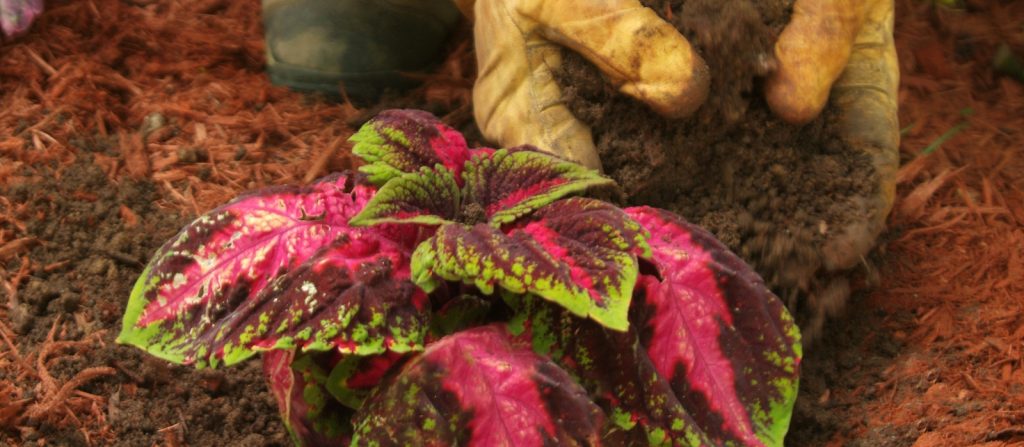Taking Care Of Your Lawn

Thank you for selecting Mow Pro to help better your landscape. The following important information will help you provide the best possible care for your newly seeded lawn and ensure complete germination of your seed.
New Grass Seed
When Do I Overseed?
To ensure maximum success in growing your seeded lawn, you want to give it the most time and greatest chance to grow. This window of opportunity is very short and can happen from late August up to the middle of October, with the greatest chance being in September. If you miss this window, it is best to wait until the following September.
Post-Overseeding Care
Once your lawn has been fertilized, dethatched and over seeded, it is now time to maintain the lawn until the seedlings germinate. With no water, the grass seed will never germinate. It takes moisture to begin the germination process. Once you moisten the seedbed, you must continue to keep it moist until germination. Germination time will vary depending on the type of grass you’ve used. You must keep the seedbed moist with frequent, light applications of water. It is usually necessary to water at least twice a day. If your seed dries out between waterings, you will risk death of the seed and decreased germination rates.
Note: Do not rely on “chance of rain” to supply adequate water to your overseeded lawn. Also, do not flood your lawn with water, or you will wash away your seed. Once your lawn has germinated, after a week or two, you can return to your usual watering cycles for that time of year.
After overseeding, do not mow your lawn until the grass seed has had time to germinate and strengthen. Usually it will be two to four weeks before you will resume mowing.
Your lawn only needs to be fertilized approximately six weeks following the overseeding process. A fertilizer was already applied when it was dethatched and over seeded in order to supply adequate food for the seed to germinate.
Remember, just because you overseeded your lawn, doesn’t mean all the seed will germinate at the same time. Going into winter, you’re lawn might not look as lush and thick as you would like. However, the remaining seed will continue to lay dormant until the following spring when it germinates. When seeded, you shouldn’t expect a scruffy looking lawn to be thick and lush in a week or two. It takes the fall, winter and spring before it will thicken and fill in to its maximum potential.
New Shrubs/Trees
After-Planting Care
Here is an outline of some general guidelines for proper watering:
- Water your trees and shrubs thoroughly after planting. General rule of thumb is 7-10 gallons per week.
- Continue to water plants regularly for the first two years that they are planted. Proper watering is especially crucial during this time, because the plants are working to establish themselves in the landscape and to overcome any transplant shock.
- Deep, less frequent watering is better than frequent, shallow watering. This promotes deep root growth and can reduce water loss by evaporation.
- Sandy soils drain water much faster than clay soils. In an area with heavy clay soil, the water percolates slowly into the ground, so water at a slower rate to help reduce run off.
- Water the root ball or the area directly below the plant rather than the leaves. The leaves can take in water, but the main uptake of water and nutrients is through the roots.
- The best time to water is during the morning hours. Afternoon watering tends to increase the chances of water loss through evaporation. Watering at night increases the likelihood of fungal infections.
- Examine the soil moisture four to eight inches deep to determine the need for water. If the soil feels dry or just slightly damp, watering is needed.
- A slow trickle of the garden hose at the base of the plant for several hours or until the soil is thoroughly soaked is the best method. Do not rely on an irrigation system to supply adequate water to shrubs/trees.
Mulching
Adding mulch around the base of the plant is a very important part of plant care that is often overlooked. By mulching plants, a more favorable environment is provided for the tree roots. Mulch allows better infiltration of water, holds soil moisture, limits weed growth, and discourages injury from lawnmowers and weed whips. Just make sure to keep mulch off of the trunks of plants.
Fertilization
Fertilization of newly planted shrubs/trees has already been done. No additional fertilizer will be needed until the next growing season.
Pruning
Trees and shrubs generally do not need to be pruned immediately before or after planting. Any broken limbs or crossing branches can be pruned out, but this is all that is needed.
Staking
Most newly planted trees will do better without staking. Young trees standing alone with their tops free to move will develop stronger, more resilient trunks than those staked for several years. Staking is only required if a tree is top heavy or in high wind areas.
Guarantee/Warranty
If you purchase a tree or shrub that has a survival guarantee, it is contingent upon the post-planting care that you provide. Be sure to follow the instructions above for shrub/tree survival.
New Sodding
Watering Sod The First Few Days
Newly installed sod has very important watering needs! Proper watering immediately after installation will ensure that your sod gets established. It also has an impact on how well the lawn continues to flourish for years to come. Water your new sod as soon as possible after it is laid. Wait no longer than 30 minutes, particularly during hot weather! Sod has a short shelf life in hot weather and will die quickly without water.
Adequate and timely water on the first day is critical! It will take a lot of water to thoroughly saturate new sod, as well as the soil below it. The ultimate goal is to thoroughly saturate both the sod and the soil to a depth of approximately 4 inches. You’ll know it’s adequately wet because it’ll be too soft to walk on without sinking or it squishes when stepped on. More importantly, if you see any areas of the lawn turning grayish green… and then brown… you’re not watering those areas enough. Any browning indicates lack of water and possible death. Unfortunately, full saturation will require hours or even a day of heavy watering.
Watering Sod After Initial Saturation
Once the sod and soil below are thoroughly saturated, you will need to keep it wet for the next two to three weeks. Your new sod needs this time to grow roots into the soft, wet ground. You’ll find that once sod is thoroughly saturated, it doesn’t take nearly as much water to keep it that way. At this point your sod still needs water, but in frequent, lighter waterings spaced out during the day to keep the grass blades cool and moist. You should plan on running 3 cycles a day… mid-morning, noon and late-afternoon. With new sod it’s very important to water periodically throughout the heat of the day. Always keep an eye out for browning from lack of water.
Below are a few tips to remember when you water:
- Check often to ensure that all areas of the lawn are being hit by the sprinklers, particularly the far edges and perimeter.
- Pay particular attention to edges of the lawn (especially exposed edges) and any areas that abut concrete or your house. Reflected sun and heat from these surfaces can quickly dry out and burn sod. It’s a good idea to give these areas additional hand watering for the first several days.
- Slopes will tend to dry out faster than the rest of the lawn and will likely require more frequent watering.
- Avoid hand sprinkling because it generally doesn’t provide the necessary uniformity. Most people don’t have the patience, time or “eye” to adequately measure what is being applied across a large area of lawn.
After two to three weeks, your sod’s roots should be knitting into the soft, moist soil. You should notice that when you pull on the grass, it doesn’t want to lift. Now you can begin a more normal watering and maintenance routine. For irrigation, the rule of thumb is to make sure your lawn receives approximately one inch of water per week. It’s best to water an established lawn early in the morning when temperatures are cool and winds are low. It’s also recommended to water deeply and infrequently rather than a little each day. This will encourage deep rooting.
When fully established, your lawn should not require irrigation more often than 2-3 times per week even under the worst heat conditions. Daily watering of any established lawn is wasteful and should never be necessary.
